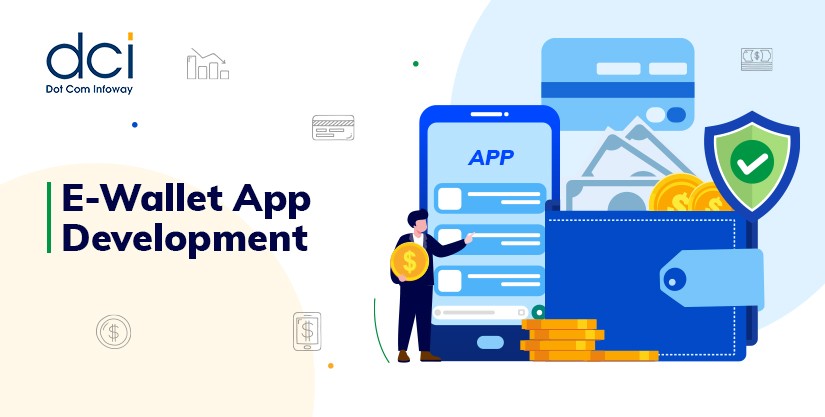1. Introduction to eWallets: Definition and Evolution
In recent years, eWallets have revolutionized the way people conduct financial transactions. Initially introduced to facilitate online payments securely, eWallets have evolved into comprehensive digital payment solutions. This section explores the definition of eWallets, their evolution, and their impact on the financial landscape.
What are eWallets?
eWallets, also known as digital wallets, are electronic devices or online services that allow individuals to make electronic transactions. They store payment information and enable secure and convenient transactions without the need for physical cash or credit cards.
Evolution of eWallets
The concept of eWallets dates back to the late 1990s with the emergence of online shopping. Companies like PayPal pioneered the idea of storing payment information securely for online purchases. Since then, eWallets have expanded to mobile platforms, integrating with smartphones and offering a wide range of functionalities beyond just payment processing.
2. Understanding the Architecture of eWallet Apps
The architecture of eWallet App Development services applications is crucial to their functionality and security. This section delves into the components and layers that make up a typical eWallet app.
Components of eWallet Apps
- User Interface (UI): The front-end through which users interact with the app.
- Payment Gateway Integration: Links the app to payment processors and financial institutions.
- Security Infrastructure: Encryption, biometric authentication, and tokenization for secure transactions.
- Database Management: Stores user information and transaction history securely.
- APIs and Third-Party Integrations: Connects the app to external services like banks and merchants.
Layers of eWallet App Architecture
- Presentation Layer: Handles user interface and interaction.
- Application Layer: Processes user requests and manages data.
- Business Layer: Implements business logic and rules.
- Data Access Layer: Interfaces with databases and external APIs.
3. Key Features and Functionality of eWallet Applications
eWallet apps offer a range of features that enhance user convenience and security. This section explores the essential functionalities that define a successful eWallet application.
Essential Features of eWallet Apps
- Secure Authentication: Biometric authentication (fingerprint, face recognition) and PIN codes.
- Payment Management: Send, receive, and request payments from contacts.
- Transaction History: View detailed records of past transactions.
- Wallet Funding Options: Link bank accounts, credit/debit cards, or load funds directly.
- Notifications and Alerts: Real-time updates on transactions and account activities.
4. Technologies and Frameworks Used in eWallet App Development
The choice of technologies and frameworks significantly impacts the performance and scalability of eWallet apps. This section examines the technologies commonly used in eWallet app development.
Front-end Technologies
- React Native: For cross-platform development.
- Swift (iOS) and Kotlin (Android): Native development for superior performance.
Back-end Technologies
- Node.js: Lightweight and scalable server-side framework.
- Django: Python-based framework known for rapid development and security.
Database Management
- MongoDB: NoSQL database for flexibility in handling unstructured data.
- MySQL/PostgreSQL: Relational databases for structured data and transactions.
5. Security Considerations in eWallet App Development
Security is paramount in eWallet app development to protect user data and financial transactions. This section discusses the various security measures and best practices.
Security Measures
- End-to-End Encryption: Encrypts data during transmission and storage.
- Biometric Authentication: Uses fingerprints or facial recognition for secure access.
- Tokenization: Replaces sensitive data with unique identifiers (tokens) to prevent unauthorized access.
- Regular Security Audits: Conducted to identify and mitigate vulnerabilities.
Compliance and Regulations
- PCI DSS: Compliance for handling credit card information securely.
- GDPR and CCPA: Regulations governing data protection and user privacy.
6. Steps Involved in Developing an eWallet App
Developing an eWallet app involves several stages, from planning to deployment. This section outlines the step-by-step process of creating a successful eWallet application.
Development Lifecycle
- Requirement Analysis: Define features, target audience, and business goals.
- Design: Create wireframes, UI/UX design, and prototype.
- Development: Front-end and back-end development, API integration.
- Testing: Conduct functional, security, and performance testing.
- Deployment: Release to app stores (Google Play Store, Apple App Store).
- Maintenance and Updates: Regular updates, bug fixes, and feature enhancements.
7. Integrating Payment Gateways and APIs
Integration with payment gateways is critical for eWallet apps to facilitate transactions securely. This section explores the process of integrating payment gateways and APIs into eWallet applications.
Popular Payment Gateways
- Stripe: Offers a developer-friendly API for online payments.
- PayPal: Widely used for international transactions and e-commerce.
- Square: Known for its seamless integration with POS systems.
API Integration
- RESTful APIs: Communicate with external services for payment processing.
- OAuth: Secure authorization framework for API access.
- Webhooks: Enable real-time notifications for transaction updates.
8. User Experience (UX) Design Principles for eWallet Apps
The user experience plays a crucial role in the adoption and retention of eWallet apps. This section discusses UX design principles that enhance usability and customer satisfaction.
UX Design Principles
- Simplicity and Intuitiveness: Streamlined navigation and user-friendly interface.
- Personalization: Customizable features based on user preferences.
- Accessibility: Ensure accessibility features for users with disabilities.
- Feedback and Notifications: Provide clear feedback on actions and transaction statuses.
- Consistency: Maintain consistent design elements and interactions across platforms.
9. Monetization Strategies for eWallet App Developers
Monetization is essential for sustainable app development. This section explores various strategies eWallet developers can adopt to generate revenue.
Monetization Models
- Transaction Fees: Charge a small percentage on transactions processed through the app.
- Subscription Plans: Offer premium features or enhanced security for a monthly fee.
- Advertising: Display targeted ads within the app based on user behavior.
- Partnerships and Sponsorships: Collaborate with banks, retailers, or service providers for commissions.
10. Benefits of Using eWallet Apps for Businesses and Consumers
eWallet apps offer significant advantages to both businesses and consumers. This section highlights the benefits that drive adoption and usage.
Benefits for Businesses
- Cost Efficiency: Lower transaction fees compared to traditional payment methods.
- Enhanced Security: Reduced risks of fraud and chargebacks.
- Customer Insights: Access to data analytics for consumer behavior and spending patterns.
- Market Expansion: Tap into global markets with seamless cross-border transactions.
Benefits for Consumers
- Convenience: Quick and easy transactions anytime, anywhere.
- Rewards and Loyalty Programs: Earn rewards or cashback on transactions.
- Financial Management: Track spending and manage budgets more effectively.
- Integration with Other Services: Combine payment with loyalty programs, ticketing, and more.





